Ruiyi Fang
Leveraging Group Classification with Descending Soft Labeling for Deep Imbalanced Regression
Dec 16, 2024Abstract:Deep imbalanced regression (DIR), where the target values have a highly skewed distribution and are also continuous, is an intriguing yet under-explored problem in machine learning. While recent works have already shown that incorporating various classification-based regularizers can produce enhanced outcomes, the role of classification remains elusive in DIR. Moreover, such regularizers (e.g., contrastive penalties) merely focus on learning discriminative features of data, which inevitably results in ignorance of either continuity or similarity across the data. To address these issues, we first bridge the connection between the objectives of DIR and classification from a Bayesian perspective. Consequently, this motivates us to decompose the objective of DIR into a combination of classification and regression tasks, which naturally guides us toward a divide-and-conquer manner to solve the DIR problem. Specifically, by aggregating the data at nearby labels into the same groups, we introduce an ordinal group-aware contrastive learning loss along with a multi-experts regressor to tackle the different groups of data thereby maintaining the data continuity. Meanwhile, considering the similarity between the groups, we also propose a symmetric descending soft labeling strategy to exploit the intrinsic similarity across the data, which allows classification to facilitate regression more effectively. Extensive experiments on real-world datasets also validate the effectiveness of our method.
Simplified PCNet with Robustness
Mar 06, 2024
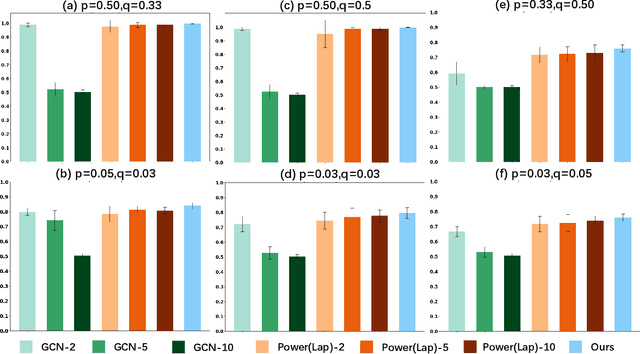
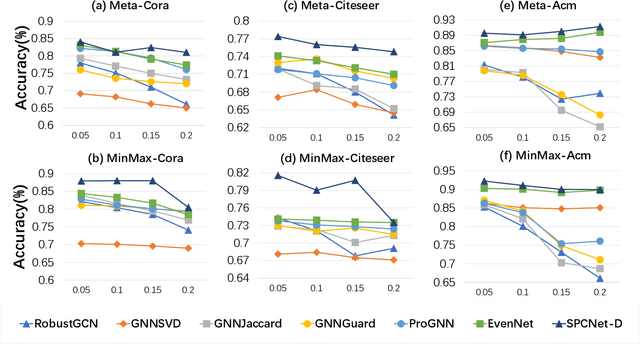
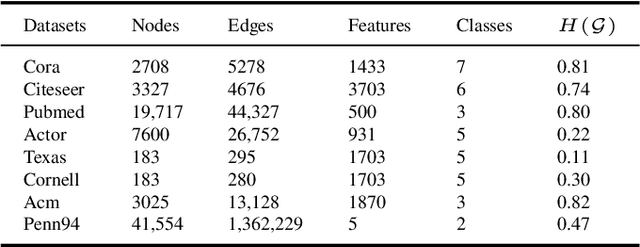
Abstract:Graph Neural Networks (GNNs) have garnered significant attention for their success in learning the representation of homophilic or heterophilic graphs. However, they cannot generalize well to real-world graphs with different levels of homophily. In response, the Possion-Charlier Network (PCNet) \cite{li2024pc}, the previous work, allows graph representation to be learned from heterophily to homophily. Although PCNet alleviates the heterophily issue, there remain some challenges in further improving the efficacy and efficiency. In this paper, we simplify PCNet and enhance its robustness. We first extend the filter order to continuous values and reduce its parameters. Two variants with adaptive neighborhood sizes are implemented. Theoretical analysis shows our model's robustness to graph structure perturbations or adversarial attacks. We validate our approach through semi-supervised learning tasks on various datasets representing both homophilic and heterophilic graphs.
Structure-Preserving Graph Representation Learning
Sep 02, 2022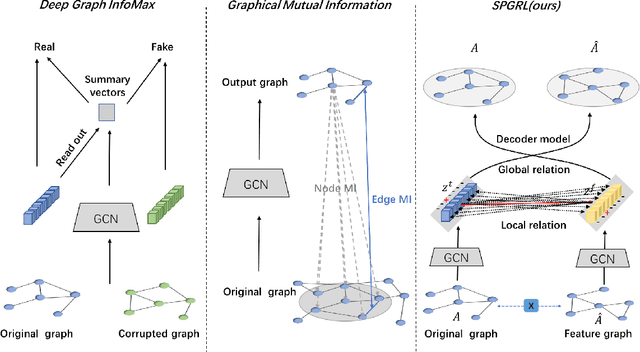


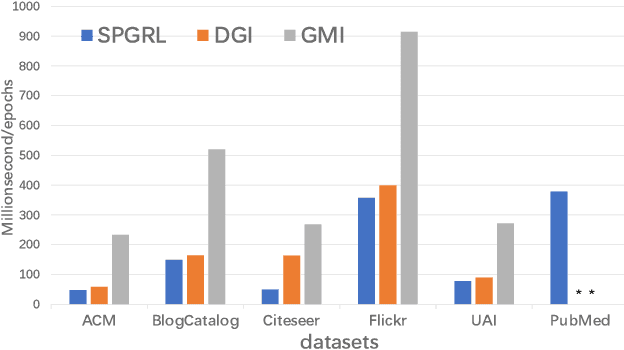
Abstract:Though graph representation learning (GRL) has made significant progress, it is still a challenge to extract and embed the rich topological structure and feature information in an adequate way. Most existing methods focus on local structure and fail to fully incorporate the global topological structure. To this end, we propose a novel Structure-Preserving Graph Representation Learning (SPGRL) method, to fully capture the structure information of graphs. Specifically, to reduce the uncertainty and misinformation of the original graph, we construct a feature graph as a complementary view via k-Nearest Neighbor method. The feature graph can be used to contrast at node-level to capture the local relation. Besides, we retain the global topological structure information by maximizing the mutual information (MI) of the whole graph and feature embeddings, which is theoretically reduced to exchanging the feature embeddings of the feature and the original graphs to reconstruct themselves. Extensive experiments show that our method has quite superior performance on semi-supervised node classification task and excellent robustness under noise perturbation on graph structure or node features.
 Add to Chrome
Add to Chrome Add to Firefox
Add to Firefox Add to Edge
Add to Edge